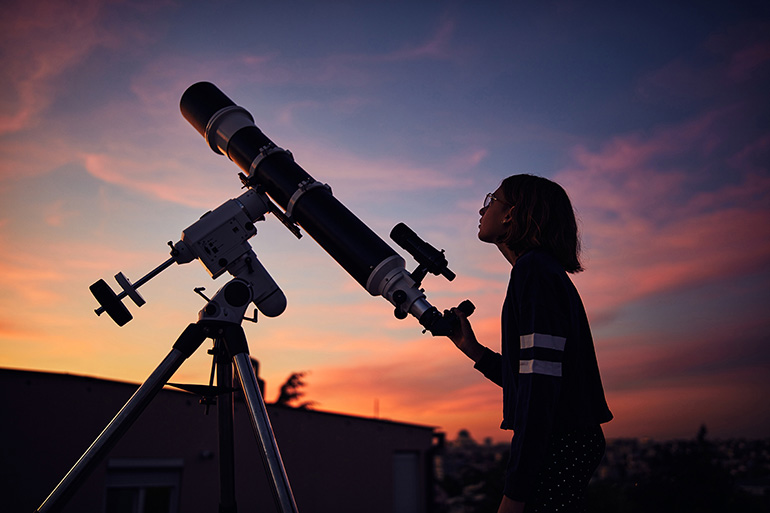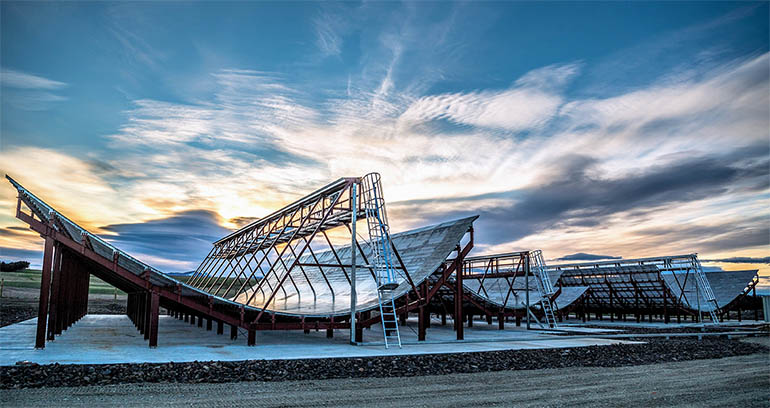Growing an innovative and inclusive space sector
On this page
A 2019 report from Deloitte showed that the New Zealand space sector contributed $1.69 billion to the economy and supported 12,000 jobs in 2018/19.[7]
The report highlighted the range of New Zealand expertise across the space sector including:
- A mix of start up, well established, entrepreneur driven, and privately funded space companies
- Strong space manufacturing and space applications sub-sectors, and cutting-edge research and development capability within several universities across the country
- Drawing on local and international talent, with strong connections to the global space economy
Objectives
The New Zealand government supports the growth of an innovative and inclusive space sector. This means:
- Promoting New Zealand’s natural advantage for conducting space activities, and research and development expertise across the space value chain
- Partnering within New Zealand and internationally to increase research and development capabilities
- Identifying opportunities to increase diversity in the space sector
- Using cutting-edge space technology and space sourced data to support New Zealand’s values and interests
Promoting New Zealand's natural advantages, and research and development expertise
Promoting New Zealand’s natural advantages and research and development expertise will attract further collaboration on space both within New Zealand and with offshore partners, and will increase space sector productivity.
With a remote location, clear skies and seas, New Zealand has one of the world’s widest selections of launch angles (azimuths) for rocket launches, and offers natural benefits for ground-based space infrastructure (including for communications and observing space objects) and the operation of launch infrastructure. Our varied landscape is also useful for testing remote sensing space technologies that can detect physical land characteristics.
In addition to our natural advantages, New Zealanders have research and development expertise across the space value chain, including planetary science, rocketry and propulsion, remote sensing data analytics, and life sciences in space.
Partnering in New Zealand and internationally to increase research and development capabilities
There is an opportunity to grow research and development capability across the space value chain. Existing partnerships and investments include, but are not limited to:
Innovation partnerships with other space agencies
New Zealand has partnered with several major space agencies to progress research and development capability, including with NASA (United States) through a Framework Agreement,[8] and with DLR (Germany)[9] under the NZ-DLR Joint Research Programme. Joint projects are enabled through MBIE’s Catalyst Fund which supports activities that initiate, develop and foster work partnerships that take advantage of international science and innovation for New Zealand’s benefit.[10]
Partnerships on science missions
MethaneSAT is a state-of-the-art satellite designed to detect global methane emissions with unprecedented accuracy. New Zealand is making two main contributions to the MethaneSAT mission: funding an atmospheric science programme over four years, and building and operating the Mission Operations Control Centre.
Innovation partnerships with international companies
MBIE facilitates partnerships between New Zealand and international companies such as Axiom, Maxar Technologies and LeoLabs, to support the growth and competitiveness of New Zealand’s space sector.[11]
Partnerships with academic institutions
MBIE engages universities involved in space related research, such as Te Pūnaha Ātea (the University of Auckland’s Space Institute), the University of Canterbury, and the Robinson Research Institute (Victoria University of Wellington).
Space scholarships
Since 2018, through an agreement with NASA, MBIE has provided scholarships for New Zealanders to take part in its International Internships Program.
Partnerships for the use, and protection, of land for launch activities
The government is committed to developing New Zealand as a hub for high value, knowledge intensive businesses that create value through innovation and R&D, whilst also protecting and rejuvenating our environment for future generations. We aim to work across government, with iwi, and with the sector, to facilitate the use of land for aerospace (space and advanced aviation) activities. The Tāwhaki joint venture situated at Kaitōrete Spit in the South Island is a recent example of this.
Partnerships to facilitate a thriving aerospace sector
The New Zealand government have been collaborating with the aerospace sector (which combines space and advanced aviation) domestically and globally, to deliver a Strategy which will drive change at pace, provide a shared vision on what aerospace could look like by 2030, and how we will get there.[12]
Identifying opportunities to increase diversity
A diverse space sector can help ensure that the benefits of space technologies and their data are shared with underrepresented communities.
The government aims to increase diverse participation and partnership in the space sector, and the science and research sector more broadly.[13] The goal is for an inclusive and diverse environment where everyone has an opportunity to participate to their fullest potential.
Resources are also being developed for young people on space, so that they consider space or related fields as a career option. To build student’s awareness of New Zealand’s achievements as a space faring nation, MBIE allocated funding for the development of the interactive Tūhura Tuarangi: New Zealand in Space Exhibition delivered by Otago Museum and Science Learning Hub’s[14] online resources for school teachers.

Using cutting-edge space technology and data to support New Zealand’s values and interests
With an increase in commercial space activity and high-value science, there is likely to be a significant increase in data generated by suborbital and orbital satellites and our space-based technologies. This can lead to benefits for all New Zealanders, aligning with our values for space activities.
Creating situational awareness in space
Situational awareness in space involves incorporating data from a range of sources to enhance what we understand about a location and how objects in Earth’s orbit behave. Our values in space have progressed in several ways through adopting space situational awareness technology.
MBIE actively tracks and monitors space objects launched from New Zealand, putting New Zealand at the forefront of monitoring satellites and taking a sustainable approach to the use of space.
Early on, MBIE’s Innovative Partnerships Programme established a partnership with LeoLabs. In 2019, LeoLabs unveiled their phased array space radar in Naseby, Central Otago, capable of tracking small satellites and space debris. It was the first of its kind in the Southern Hemisphere.
MBIE worked with LeoLabs to develop the Space Regulatory and Sustainability Platform, enabling us to track and monitor space objects launched from New Zealand until we were able to develop the internal capability to carry out this function in 2024.
The New Zealand government frequently discusses space situational awareness, space traffic management and related issues with other space nations.

A view of the LeoLabs Kiwi Space Radar, Naseby, Central Otago.
Credit: LeoLabs
[7]Deloitte. (2019). New Zealand space sector: its value, scope and structure [PDF, 1.9 MB].
[8] Govt signs NZ–USA agreement launching new opportunities for space sector(external link) — Beehive
[9] See New Zealand–DLR frontier Joint Research Programme funding announced
[10] More information about the Catalyst Fund
[11] More information on MBIE’s Innovative Partnerships Programme
[12] More information about the Aerospace Strategy
[14] See Aotearoa New Zealand in space – an introduction(external link) — Science Learning Hub
< Supporting New Zealand's values and interests in space | Protecting and advancing our national security and economic interests >

